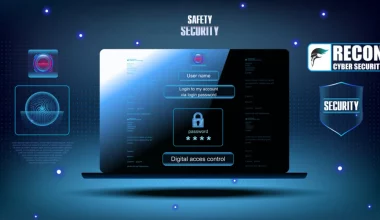Do you know what these four organizations—CISCO, Colonial Pipeline, SolarWinds, and Marriott—have in common? Aside from the fact that they’re all renowned powerhouses of their industries (with CISCO being one of the most successful networking companies in history), they’re also all recent victims of cyber-attacks. And it’s not just them; Nvidia was hacked last year too. There is no doubt that anyone can be a potential target; even if you have access to some of the greatest defenses against hackers, there will always be vulnerabilities out there waiting to take advantage.
As such, smaller companies – who may lack some of those same resources – could potentially become much easier targets for malicious hackers looking to breach someone else’s system or steal important information.
So what’s the point of this article? Simply put, it’s to reiterate that every organization – regardless of size, scale and industry – will likely be attacked at some point in its lifetime. There is no way to stop attacks from happening; all you can do is prepare a plan to respond. One such plan (Cybersecurity Incident Response) ensures your company has taken all necessary precautions before things happen and keeps your company afloat when they inevitably do happen. Start implementing this plan today if you haven’t already!
What exactly is a cybersecurity incident response plan?
A Cyber Incident Response Plan is essentially a guide or a set of steps that your business will follow in the event of an attack. It is a document that spells out the actions that need to be taken to minimize damage and protect data during such incidents. The idea behind having a plan is to eliminate poor decisions–even worse, no decision-making at all–amid chaos. If management and security teams have worked out an ideal and effective response strategy in advance, you can vastly increase your chances of preventing significant harm from occurring due to malicious software or data breaches against your company’s digital systems. You’ve already made plans for what to do when things are calm; those plans should reflect in this incident response strategy. During the crisis itself, all you’ll need to do is consult your muscle memory–the learnings acquired over time that makeup how we react automatically upon encountering new information–as we carry out our preplanned course of action
What are the benefits of having a cyber incident response plan in place?
This is why you need to remember that proverb, If you don’t plan, then plan to fail. It is said that someday you may wake up and find yourself the victim of a ransomware attack or denial of service DDoS attack. And if this happens and you haven’t planned for it at all beforehand, can you call yourself anything but careless?
A Cyber Incident Response Plan is important because it helps businesses identify breaches correctly; contain an attack; control damage; protect customers’ data and other sensitive information; patch vulnerabilities that lead to an attack; recover from an attack with minimal damage and legal implications (should there be any); learn from their mistakes and improve upon the CYBER INCIDENT RESPONSE PLAN even more!
What Should My Cybersecurity Incident Response Plan Include?
A well-thought-out cyber incident response plan example should detail the key steps your company will take in the event of a cyberattack. These may include:
A description of your company’s incident response team and their respective roles and responsibilities.
An overview of the company’s incident response process. This may also include outlining how information is communicated among employees, clients, etc., along with overall confidentiality expectations.
The steps that will be taken to contain or stop an attack when one has been identified; may also involve developing processes for data restoration after an attack has occurred.
How to properly share information within the organization as well as with external stakeholders, while maintaining confidentiality if required. Include contact information for those responsible when appropriate. To make sure it looks professional, utilize a logical format so nothing gets overlooked while minimizing time spent proofreading at the end—our Cyber Incident Response Plan template provides some guidance here!
What does cyber incident response mean and how does it work?
Remember when we talked about muscle memory before? Testing Incident Response Plans regularly helps to build that muscle memory so that your responses during the attack are accurate, effective, and smoother than ever. After all, it’s clear to many people why Incident Response Plans should be tested for efficacy—but not everyone understands just how to do it. And this is where simulated attacks via Cyber Crisis Tabletop Exercises come into play.
During these exercises, a highly experienced cybersecurity expert creates a simulated attack scenario for the participants from your company. These participants should include key decision-makers who need to make tough choices during a cyber incident such as IT personnel and Incident Responder Teams or Board Members. It involves simulating an attack on your system and observing how your team responds without having any real consequences—because no data or information can be compromised in these simulations either!
This way, every key player in the Incident Response process will know their role and responsibilities more clearly and will be able to practice implementing your IR plan during tabletop exercises. Doing so can also identify any potential weaknesses or holes in your IR strategy, which ensures everyone has a clear understanding of what they need to do if there is an attack.
Conclusion
Every company needs a comprehensive plan to operate successfully. It is a documented process that an organization should follow in the event of a cyber attack. It outlines the steps they will take to protect their data, minimize damages, and restore operations. Most importantly, this plan should be brief and concise to ensure everyone understands it. In today’s digital world, having an effective Cybersecurity Incident Response Plan in place has never been more important – even if you think you’re too small or too big for anyone to bother attacking; think again! As we’ve seen from recent events with major corporations, one mistake can lead to devastating consequences for your company which might include loss of time and money, as well as lost customers—so don’t wait around until it’s too late! Start making preparations now by creating your own secure incident response plan so when disaster strikes, you’re ready.







